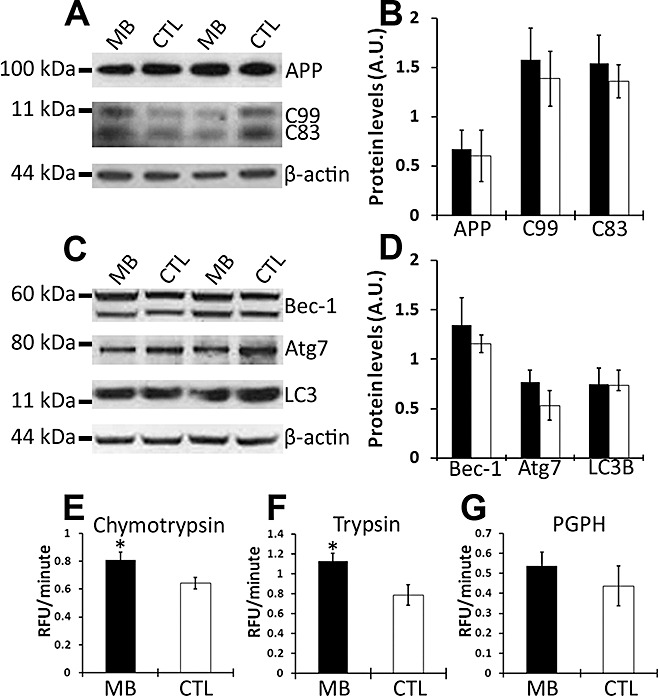Figure 5.

Methylene blue (MB) increases proteasome activity. (A) Representative Western blots of proteins extracted from brains of MB‐treated and control 3xTg‐AD mice probed with antibodies 6E10, CT20 and β‐actin as a loading control. (B) Densitometric analysis of blots (normalized to β‐actin) indicates that the steady‐state levels of APP and the two major c‐terminal fragments (C99 and C83) were not affected by MB treatment. Data obtained from five treated and five untreated 3xTg‐AD mice. (C) Representative Western blots of proteins extracted from brains of MB treated and control 3xTg‐AD mice probed with different autophagy markers. (D) Densitometric analysis indicates that MB does not significantly affect the steady‐state levels of Beclin‐1 (Bec‐1), ATG‐7 or LC3B. Data obtained from five treated and five untreated 3xTg‐AD mice. (E–G) Brain homogenates from MB‐treated (n = 12) and control (n = 6) 3xTg‐AD mice were analyzed for proteasome activity. The data show that MB increases the chymotrypsin‐ and trypsin‐like activity, although it has no effect on the peptidylglutamyl‐peptide hydrolyzing (PDPH) activity. Data are presented as means ± standard error of the mean and analyzed by t‐test analysis. *indicates P < 0.05.
